博文
[转载]hLife 2024年第十一期正式出版
||
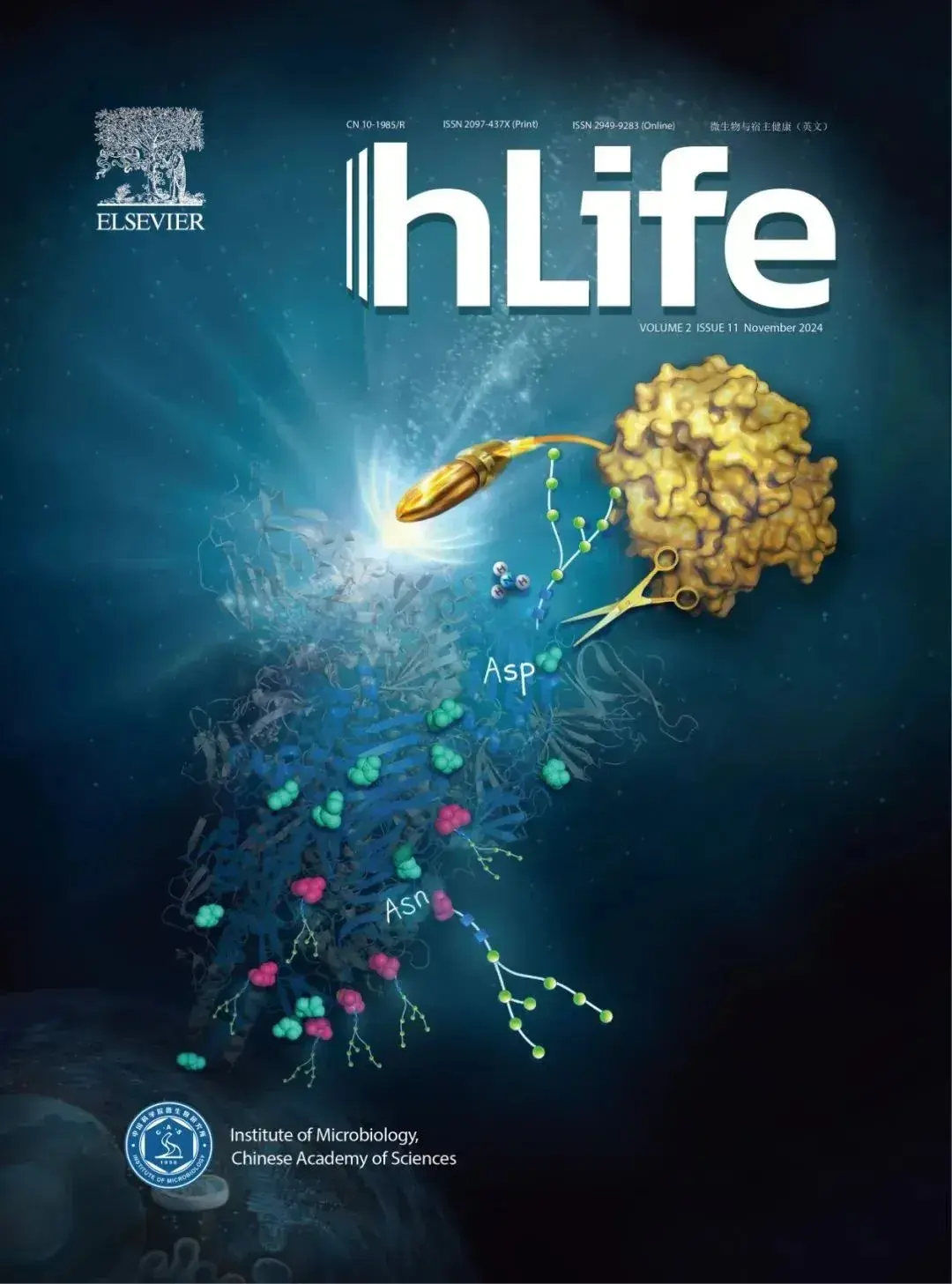
Volume 2 Issue 11
封面解读
田朝光
Targeted protein editing might be a new generation technique for biotechnology that remains to be developed. We designed a novel protein editor capable of directly editing Asparagine to Aspartate in N-glycosylated proteins within living cells. This was achieved by fusing a high-affinity targeting peptide with an active peptide:N-glycosidase. The editors that we developed effectively removed N-linked glycans from Asparagine sites in the SARS-CoV-2 spike protein, converting the residue to Aspartate. The edited spike protein exhibited instability and accelerated degradation. Notably, the top candidate, LCB1-PNGase F fusion editor, significantly reduced syncytia formation caused by the spike protein and inhibited pseudovirus packaging, effectively blocking viral entry into host cells. This research presented a method for editing protein sequences post-de-N-glycosylation in living human cells, also offering the potential for developing new targeted protein degradation techniques in the future.
目 录
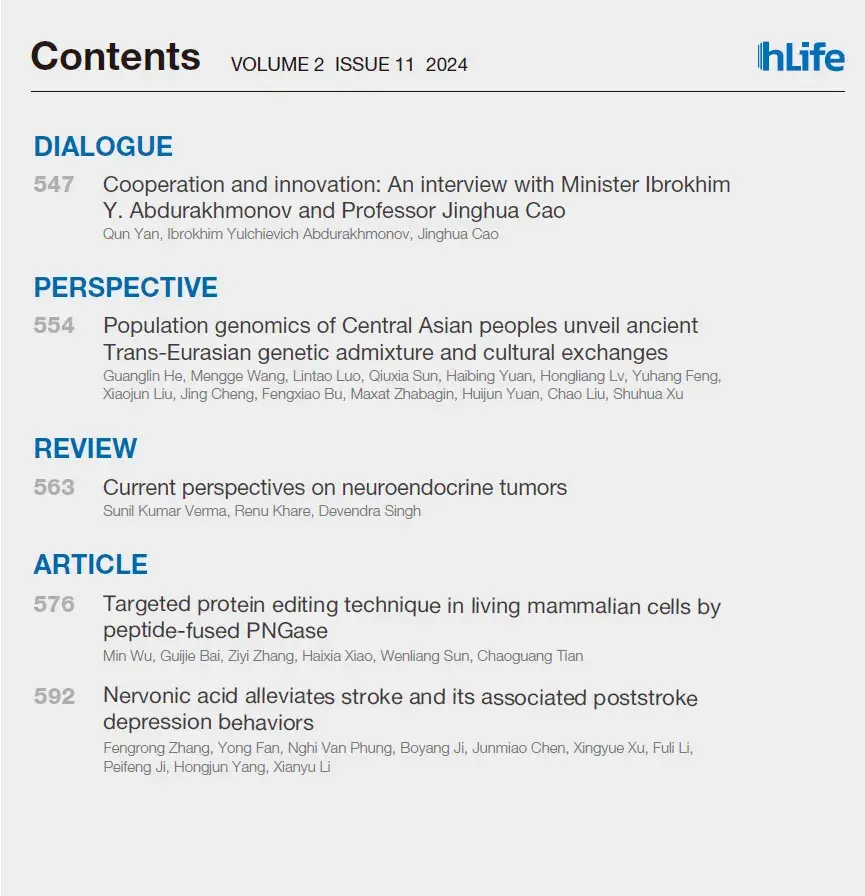
导 读
点击文章标题可跳转至原文……
1.Cooperation and innovation: An interview with Minister Ibrokhim Y. Abdurakhmonov and Professor Jinghua CaohLife | 中乌合作创新,共塑“一带一路”新篇章—— 专访乌兹别克斯坦农业部部长Ibrokhim Abdurakhmonov与曹京华教授
通讯作者:闫群、Ibrokhim Yulchievich Abdurakhmonov、曹京华
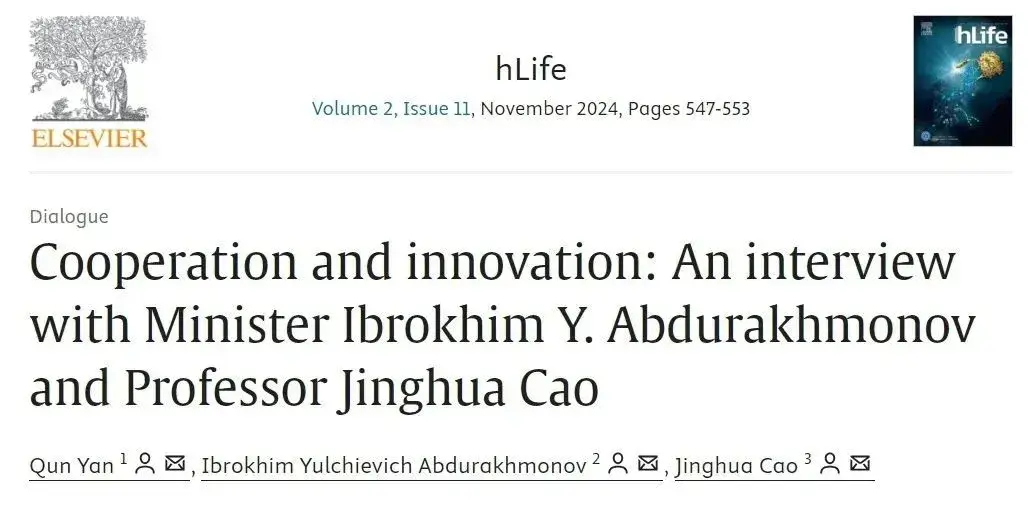
本采访中Abdurakhmonov部长与曹京华教授分享了两国在生物科学领域的合作经验和成果,尤其是在合作开发COVID-19重组蛋白疫苗方面的努力和经验,共同探讨了国际合作在科技创新上的重要性,并对中国与乌兹别克斯坦未来的科技合作做出展望。

引用:
Yan Q, Abdurakhmonov IY, Cao J. Cooperation and innovation: An interview with Minister Ibrokhim Y. Abdurakhmonov and Professor Jinghua Cao. hLife 2024; 2: 547–553.
hLife Perspective | 刘超院士、徐书华、袁慧军等综述中亚人群基因组研究进展及发展战略框架
通讯作者:何光林, 王萌鸽, 袁慧君, 刘超, 徐书华

该论文系统论述了中亚古今人群的基因组研究进展,并提出了未来构建中亚人群大规模特异性基因组资源库的方案。人类古今基因组研究不仅有助于阐明人群的起源、迁徙、演化及混合历史,还在系统解析人群疾病与健康的遗传调控机制、揭示复杂性状遗传学基础的时空演化轨迹并推动人类遗传疾病的早期筛查、诊断与治疗方面有重要意义。

引用:
He G, Wang M, Luo L, et al. Population genomics of Central Asian peoples unveil ancient Trans-Eurasian genetic admixture and cultural exchanges. hLife 2024; 2: 554–562.
3. Current perspectives on neuroendocrine tumorshLife | 神经内分泌肿瘤研究进展与展望通讯作者:Devendra Singh
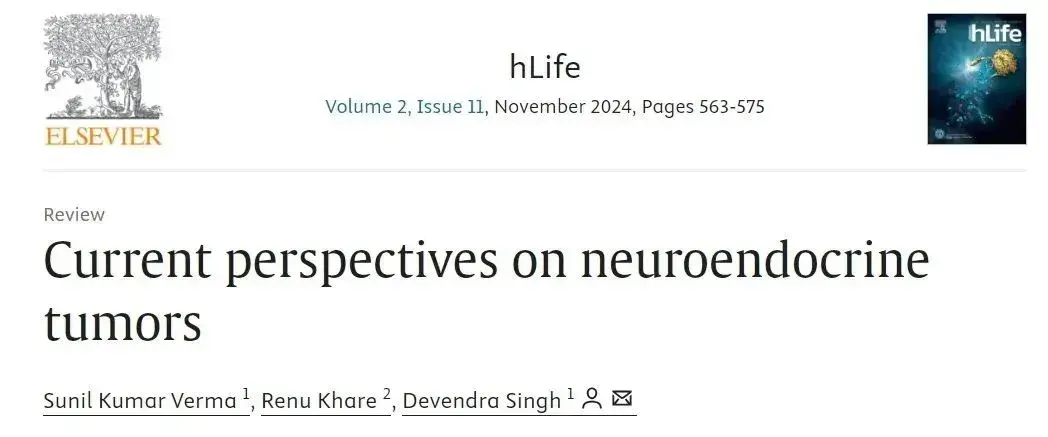
研究总结了目前NETs领域的研究进展,包括其发病机制、分类、临床表现、诊断方法、治疗选择和预后指征等,并为未来NETs的发病机制研究和治疗手段开发提供了新的见解。
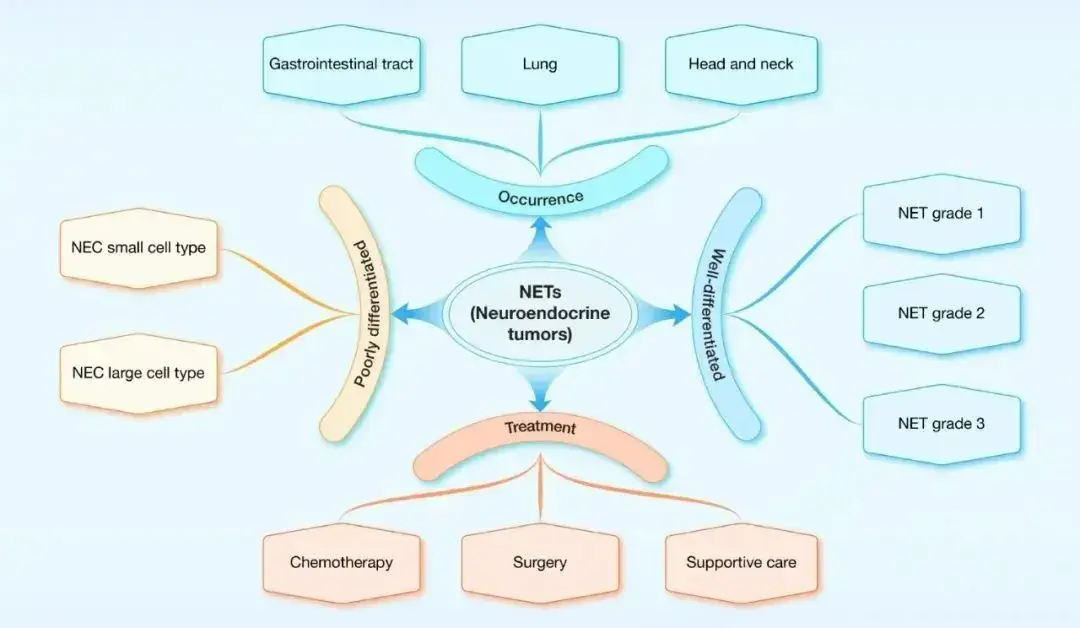
引用:
Verma SK, Khare R, Singh D. Current perspectives on neuroendocrine tumors. hLife 2024; 2: 563–575.
4. Targeted protein editing technique in living mammalian cells by peptide-fused PNGasehLife | 蛋白质靶向编辑技术研发:成功实现新冠病毒刺突蛋白N-糖基化位点特异性编辑通讯作者:田朝光
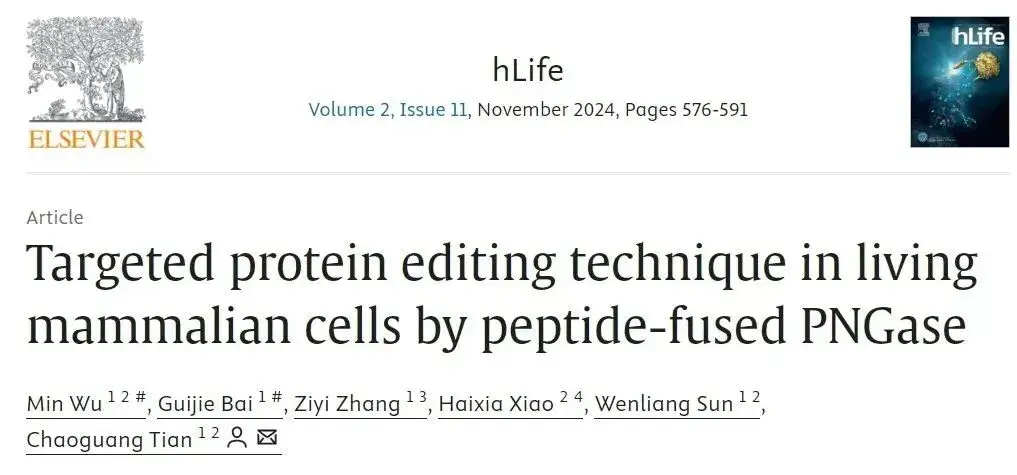
该研究开发了一种基于肽:N-糖苷酶的靶向蛋白质编辑技术,实现了在哺乳动物细胞中直接编辑目标糖蛋白的N-糖基化修饰位点,去除了天冬酰胺残基上连接的糖链并把天冬酰胺残基脱酰胺为天冬氨酸,导致蛋白质序列发生变化,进而影响蛋白质的功能、定位和稳定性。
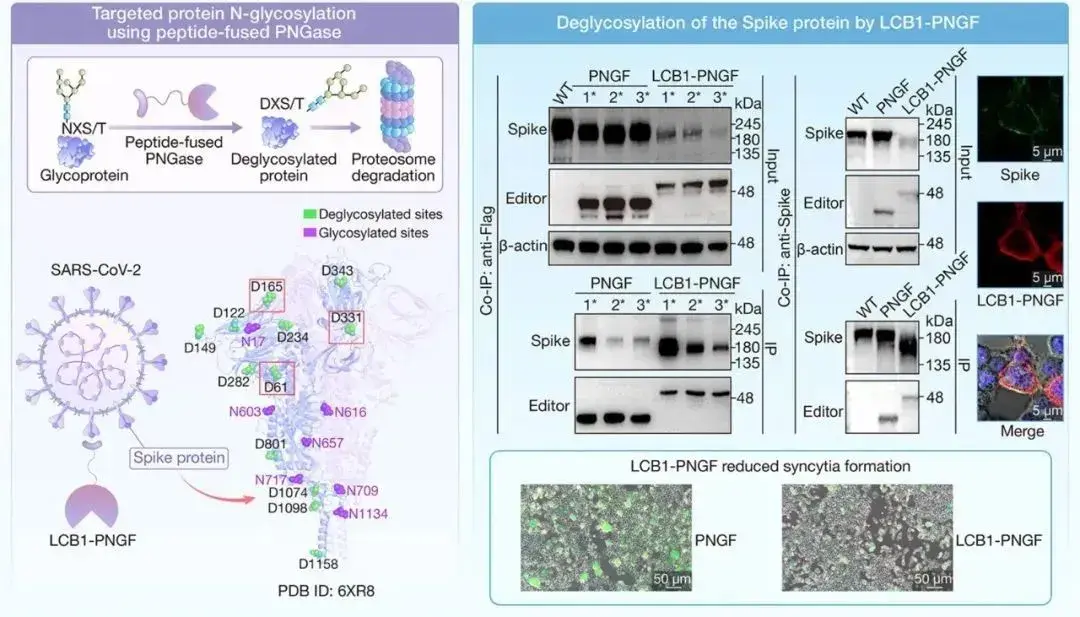
引用:
Wu M, Bai G, Zhang Z, et al. Targeted protein editing technique in living mammalian cells by peptide-fused PNGase. hLife 2024; 2: 576–591.
5. Nervonic acid alleviates stroke and its associated poststroke depression behaviors
hLife | 神经酸,一种改善大鼠卒中和卒中后抑郁行为的潜在药物
通讯作者: 李福利, 冀培丰, 杨洪军, 李贤煜
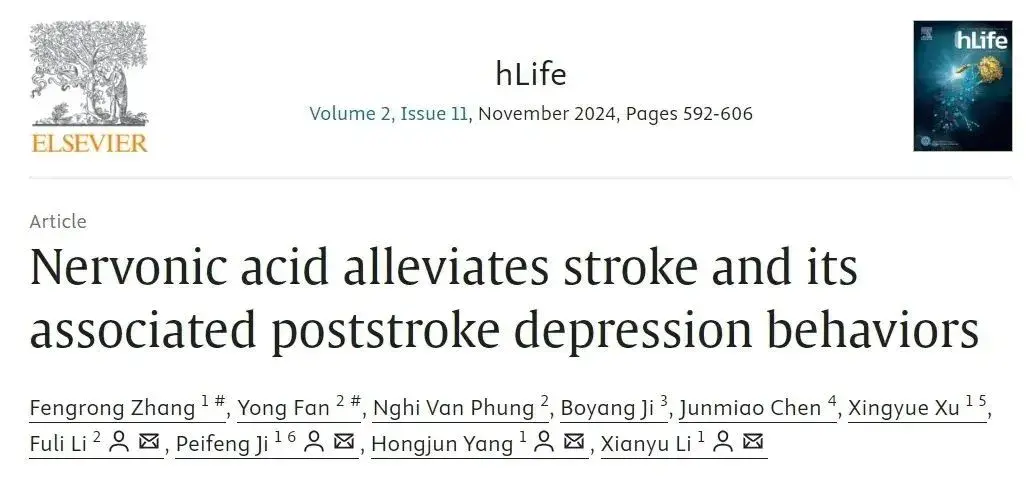
该研究发现神经酸可以实现脑中原位的补充,实现上调大鼠脑源性神经营养因子和髓鞘碱性蛋白的表达;同时灌胃通过“脑-肠轴”跨器官调控,实现肠道微生物群的调节,辅助改善大脑中谷氨酸和苯丙氨酸的代谢,从而达到改善卒中及卒中后抑郁样行为的作用。
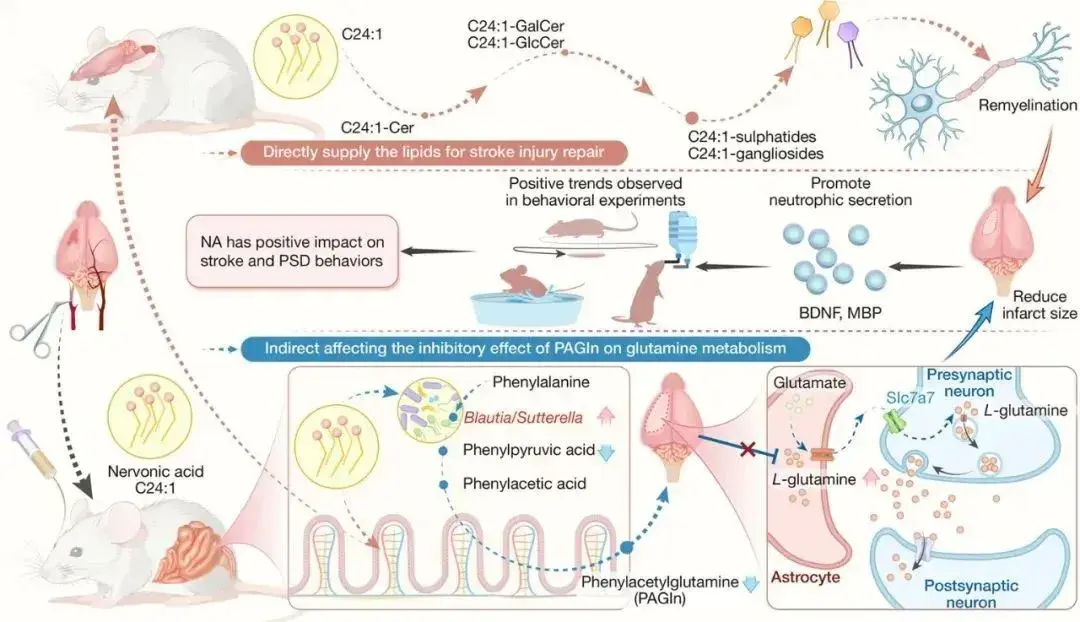
引用:
Zhang F, Fan Y, Van Phung N, et al. Nervonic acid alleviates stroke and its associated poststroke depression behaviors. hLife 2024; 2: 592–606.
期刊简介
hLife由高福院士、董晨院士和Jules A. Hoffmann教授(2011诺奖获得者)领衔,是中国科学院微生物研究所主办,中国生物工程学会,浙江大学陈廷骅大健康学院,西湖大学医学院,上海市免疫治疗创新研究院和广州霍夫曼免疫研究所联合支持,与国际出版商爱思唯尔合作的健康科学领域综合性英文期刊。
hLife聚焦健康科学领域的前沿进展,旨在促进基础研究与临床应用的融合发展。期刊发表与医学相关各研究领域最新成果,学科领域包括(但不限于)病原生物学、流行病学、生理学、免疫学、结构生物学、疾病监测、肿瘤、药物、疫苗和健康政策等。
hLife是一本金色开放获取期刊,月刊出版;2022年成功入选“中国科技期刊卓越行动计划高起点新刊”;2023年11月正式创刊; 2024年5月被DOAJ收录;2024年8月被Scopus收录。
2026年前hLife接受的稿件免收文章处理费(APC)。
期刊网址:
https://www.sciencedirect.com/journal/hlife
邮箱| hlife@im.ac.cn
电话|(86)10-64807577
https://blog.sciencenet.cn/blog-3552961-1460857.html
上一篇:[转载]hLife | 鼻黏膜 sIgA 抗体具更强广谱中和能力,且更不容易被奥密克戎变异株逃逸
下一篇:[转载]hLife编委 | 吕志民团队:首次发现哺乳动物细胞乳酰辅酶A合成酶促进组蛋白乳酸化及肿瘤免疫逃逸(Cell Metab